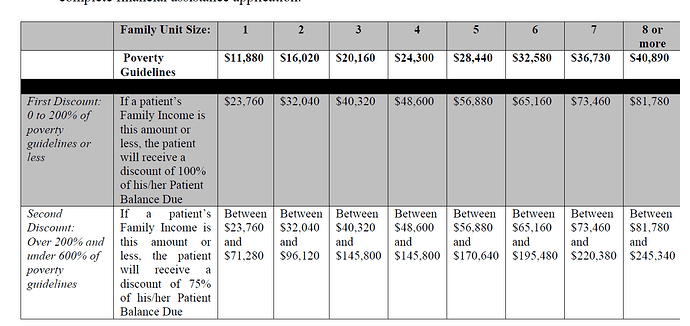This is an archived post by a user who was deleted:
2018-03-10T06:00:00Z
As you walk into a new country it takes a while for you to get accustomed. Especially with terms, terminologies and their context. When it comes to hospital billing its a whole new world and a night mare for an international student. I share my insights, gained from my personal experience and to acknowledge people who have helped me through this process. I had visited the SHS for a abdominal pain and cramp for which I was recommended a CT scan.The test results told me I was all good. The surprise in stock was to be a hospital bill of ~$1200 for the CT scan. The more interesting fact was that the base price of a CT scan was ~$10000 and insurance covered 90% minus the deductible bringing it to the sum above. The insurance company was correct and their coverage was appropriate but a grad student with low savings/income had his woes.
Worst case I pay it but then the hospital bill had a section on financial aid etc., but I initially ignored it thinking I may be not be eligible for it. However I thank google for ultimately getting me to the GSU’s blog where another international student had written on disputing medical bill, with lots and lots of useful advice.https://uchicagogsu.org/disputing-your-medical-bill/
Though the article has a different story and a perspective the idea behind it did help me and I did have a conversation with the person who wrote that and that person did guide me to the hospital forms where I could apply for a discount or aid from the UC hospital.
Financial Assistance - UChicago Medicine
The UC hospital in fact has a good income based scheme for discounting and I appreciate their policy, for a country like US where healthcare is very expensive.
According to their financial aid policy (Which is available on the shared link, the top right corner of that page) .The above snapshot from there summarizes how they give 100% discount to people within 100 to 200% of the poverty line and 75% for those between 200 and 600% of the poverty line.
For eg: Poverty line is $11,880 for a family of size one or a single grad student.
So you get 100% discount if your gross annual income (The one before taxes) is less than $23,760
and 75% if your annual income is between $23,760 and $71,280Ideally before taxes a PSD grad student falls for 75% discount and many other grad students would fall under the 100% discount category. As a fun fact, from the article below in NY times we can see that a grad students salary is less than the average amount of money the US government spents on a prisoner. http://www.nytimes.com/2013/08/24/nyregion/citys-annual-cost-per-inmate-is-nearly-168000-study-says.html
Another fun fact is that the bill I received for ~1200 USD is enough for a round trip fare home plus a couple of CT scans there. Infact it wouldnt cost me 1200 INR for a CT scan there with the same machine and support.The final verdict is that I filled up the form in the above link and obtained a 75% discount. It is an easy hassle less way if you fill the form with appropriate documents for support. However we should see to it that such a scheme is maintained by the UC hospitals for a longer period of time
I would like to thank a couple of members of GSU who addressed my queries and a roommate of mine who showed me how we grad students are on the brink of the poverty line
And my response that followed:
2018-04-24T05:00:00Z
I can confirm that the UCMC Financial Assistance program works well for us graduate students. I applied two weeks ago and within a week my outstanding balance was reduced by 75%, now I can actually afford to pay the bill for emergency visit and surgery that university insurance didn’t fully cover.
Thanks for telling me about the program and sharing the process here as well.
